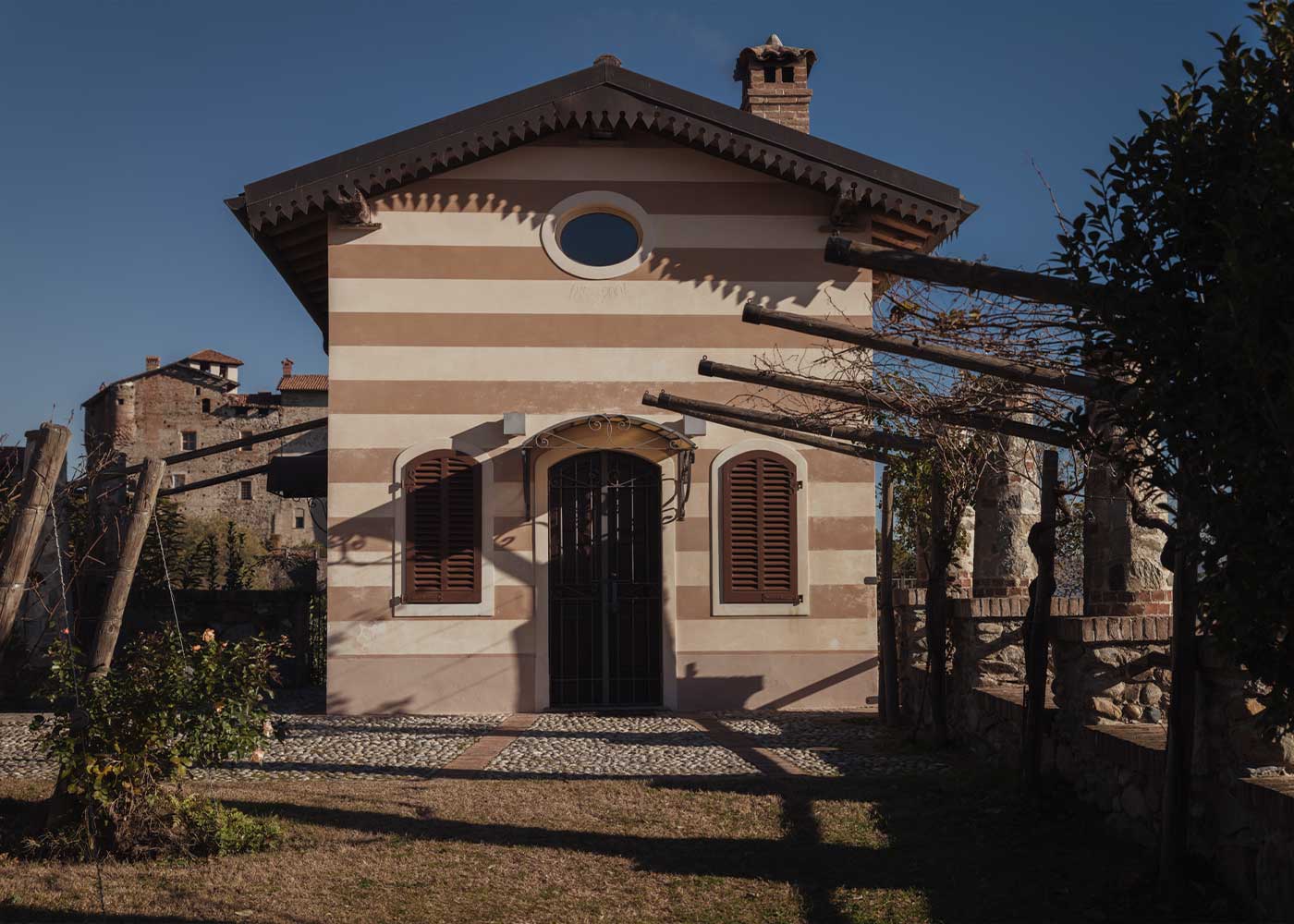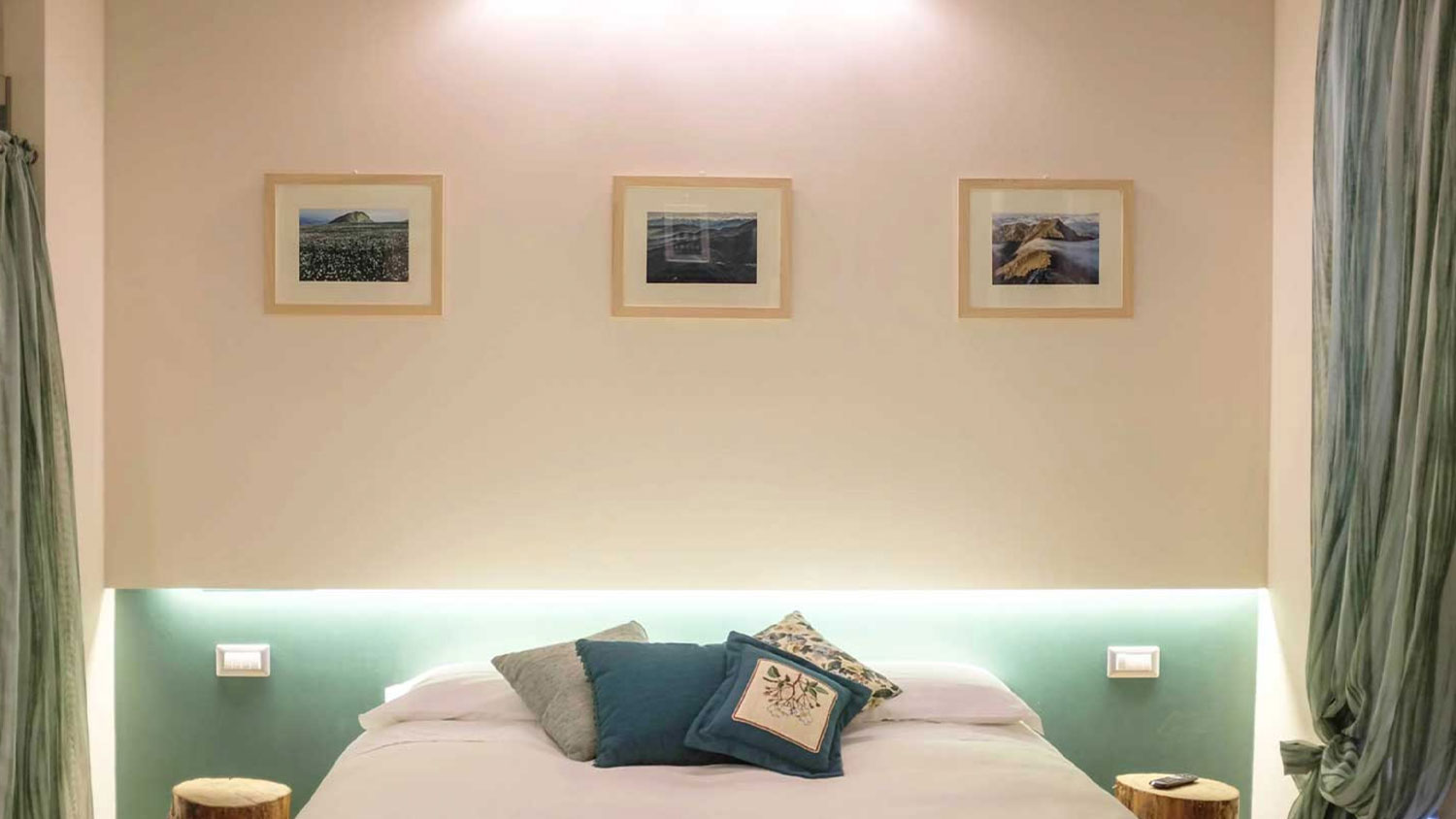
[ The “Villino” of the Belvedere Vineyard ]
Have you ever walked through a vineyard with crickets singing and the sun kissing your forehead? Have you ever done a tasting among the rows of vines? Then let’s not talk about the autumn of a thousand colors, the grape harvest, the warmth of the potagè flame on which to prepare dinner. Pure emotion, a caress on the soul. An unforgettable experience to spend with the person you love.
The Villino of the Belvedere Vineyard awaits you for visits, tours, events and tastings. The warm and romantic setting played on bordeaux tones is ideal for those who love to dive into nature while enjoying a unique location.
Prezzo a partire da 150€
The Belvedere Vineyard is a magical and exclusive place, rich in history and charm. It is a balcony overlooking the Ivrea Morainic Amphitheatre, a result of the last glacial surge that occurred approximately 10-12,000 years ago.
The vineyard was certainly part of the Castle of Loranzè, but in the 18th century, it passed into the hands of the Giacosa Family, from whom the famous poet Giuseppe Giacosa, librettist for Giacomo Puccini and author of the librettos for Madame Butterfly, Tosca, and La Bohème, is descended.
Today, the vineyard is entirely planted with Erbaluce di Caluso, an indigenous grape variety of the region, cultivated using completely natural methods without the use of systemic products, fertilizers, pesticides, or insecticides, and it is in the process of obtaining organic certification
The location of the Belvedere Vineyard allows the eye to sweep 360 degrees and enjoy a particularly striking panorama. On one side is Castel Rosso, in the background the Villino that welcomed wayfarers visiting the castle many centuries ago, and rows of Erbaluce as far as the eye can see with yellow-orange roses at the heads.
Today the vineyard is included among the historic parks and gardens of the province of Turin and is listed on Italian Botanical Heritage among the botanical beauties of our country. For many centuries, the hill has been used for the cultivation of vines: its soil is very poor in organic matter, but very rich in minerals eroded by glaciers on the flanks of the Aosta Valley Alps.














